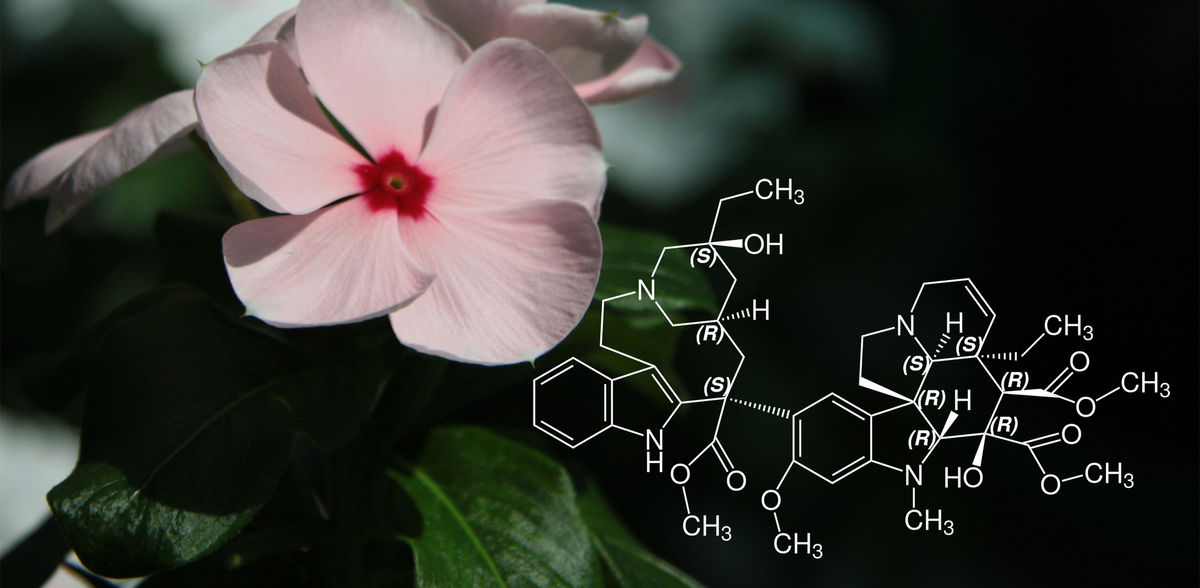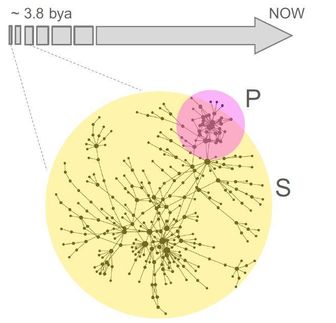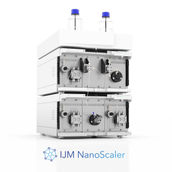Analysis of single plant cells provides insights into natural product biosynthesis
Single-cell multi-omics reveals that cell types are differentially involved in the production and accumulation of medically relevant plant compounds
In a new study published in Nature Chemical Biology, an international team of researchers from the University of Georgia, USA, and the Max Planck Institute for Chemical Ecology in Jena, Germany, presents a promising strategy for elucidating metabolic pathways for plant compounds of medicinal importance. The research team studied the biosynthesis of two alkaloids from the plant Catharanthus roseus that are used in human medicine as anti-cancer agents. The genes for the formation of these active substances are expressed in different cell types. By using single-cell analyses, the scientists were able to discover new genes important for biosynthesis and show that the intermediates of the metabolic pathway accumulate in specific cell types. The researchers predict that this methodological approach will provide important new insights into the biosynthesis of many other natural products from the plant kingdom.
Plants are impressive in their diversity, but especially in the variety of metabolites they produce. Many plant natural products are highly complex molecules, such as the alkaloids vincristine and vinblastine, which are produced by the Madagascar periwinkle Catharanthus roseus. These two substances are already indispensable in cancer therapy.
Researchers are very interested in finding out which individual biosynthetic steps are required to form the complex molecules. "Currently, these compounds are still obtained in very small quantities from the plant's leaf extract. We can learn from the plant how this compound is produced and use this knowledge to develop production systems that are more cost-effective, scalable and sustainable," said first author Chenxin Li of the University of Georgia's Center for Applied Genetic Technologies, describing the research goal.
Assigning genetic and metabolic information to individual cells of plant organs
The scientists know that gene activity is not the same in all cells of a plant and that the chemistry can differ drastically from cell to cell. Therefore, the goal of the current study was to use a new set of methods collectively termed single-cell omics to investigate specialized and rare cell types that play a central role in the biosynthesis of plant natural products, and whose signals are often obscured by more abundant cell types in plant organs. "With single-cell omics, we have a method that allows researchers to assign genetic and metabolic information to individual cells. The term omics refers to the fact that an entire collection of genes or metabolites is quantified and analyzed," says Lorenzo Caputi, head of the Alkaloid Biosynthesis Project Group in the Department of Natural Product Biosynthesis in Jena and one of the lead authors, explaining the methodological approach.
Biosynthetic pathway of vinblastine - organized in three distinct cell types
As the analyses showed, the entire biosynthetic pathway for the alkaloid vinblastine is organized in three stages and three discrete cell types. "The first stage is expressed exclusively in specialized cells associated with vascular bundles in the leaf, called IPAP. The second stage of the biosynthetic pathway is expressed only in cells of the epidermis, the layer of cells that cover the leaves, and the last known steps of the biosynthetic pathway are expressed exclusively in idioblasts, a rare cell type of the leaf," Chenxin Li summarizes the results.
The researchers measured the concentrations of several intermediates in the metabolic pathway for vinblastine in single cells and were surprised: "Two important precursors of vinblastine, catharanthine and vindoline, occur in the idioblast cells at millimolar concentrations, about three orders of magnitude higher than vinblastine itself. The concentration of the two precursors in these cells was much higher than we expected and even exceeded their concentrations in whole organ extracts. However, this observation makes sense in that catharanthine and vindoline were found only in the rare idioblast cells. The abundant other cells in the leaf dilute the high concentration when whole leaves are crushed," says Sarah O’Connor, head of the Department of Natural Product Biosynthesis.
The research team is confident that the organization of biosynthetic pathways for medicinally relevant alkaloids in Catharanthus roseus is not an isolated phenomenon. "We are just beginning to understand how and why such a cell type-specific organization exists. In addition, analysis of genes expressed simultaneously in a particular cell type has helped us identify new players in this metabolic pathway. The same technique can be used to study the biosynthesis of many other natural products. Finally, the exact sites of accumulation of plant compounds, such as the epidermis, the vascular system, or latex duct, can help us hypothesize the ecological roles of natural products. For example, depending on the pattern of accumulation, the compounds may be more effective against biting insects than they are against sap-sucking insects," says Robin Buell, Professor at Georgia University.
A better understanding of the biosynthetic pathways of the anti-cancer drugs vincristine and vinblastine may also help to produce or harvest these compounds more effectively in the long term. The use of methods described is also promising for the study of many other interesting and medically important natural products from the plant kingdom. The approach described here will help to narrow down these rare and specialized cells and uncover the gene activities and chemistry that are exclusive to them.
Original publication
Other news from the department science
These products might interest you
Most read news
More news from our other portals
See the theme worlds for related content
Topic World Cell Analysis
Cell analyse advanced method allows us to explore and understand cells in their many facets. From single cell analysis to flow cytometry and imaging technology, cell analysis provides us with valuable insights into the structure, function and interaction of cells. Whether in medicine, biological research or pharmacology, cell analysis is revolutionizing our understanding of disease, development and treatment options.

Topic World Cell Analysis
Cell analyse advanced method allows us to explore and understand cells in their many facets. From single cell analysis to flow cytometry and imaging technology, cell analysis provides us with valuable insights into the structure, function and interaction of cells. Whether in medicine, biological research or pharmacology, cell analysis is revolutionizing our understanding of disease, development and treatment options.

























































